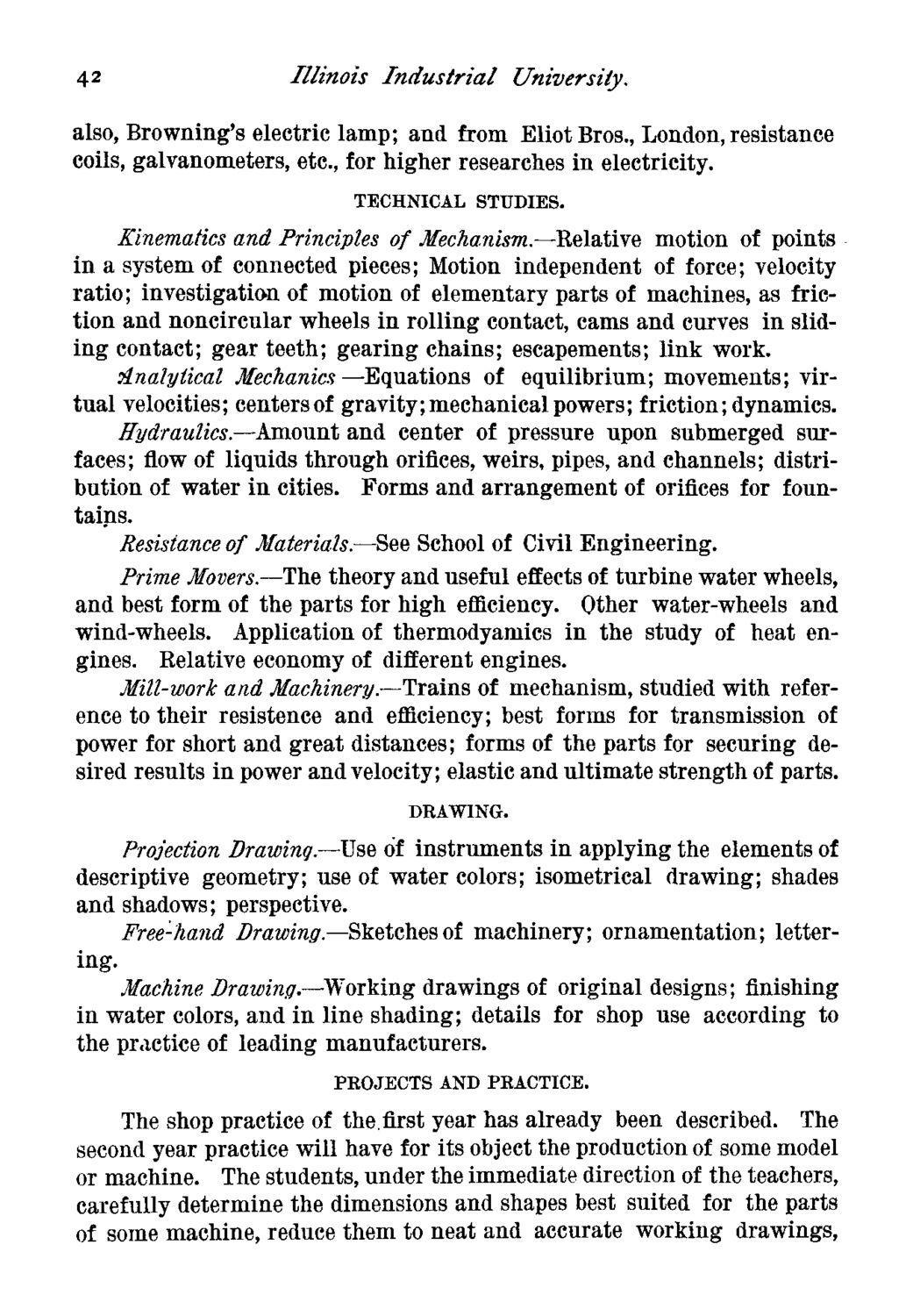| |
| |
Caption: Course Catalog - 1881-1882
This is a reduced-resolution page image for fast online browsing.

EXTRACTED TEXT FROM PAGE:
42 Illinois Industrial University. also, Browning's electric lamp; and from Eliot Bros., London, resistance coils, galvanometers, etc., for higher researches in electricity. TECHNICAL STUDIES. Kinematics and Principles of Mechanism.—Relative motion of points in a system of connected pieces; Motion independent of force; velocity ratio; investigation of motion of elementary parts of machines, as friction and noncircular wheels in rolling contact, cams and curves in sliding contact; gear teeth; gearing chains; escapements; link work. Analytical Mechanics—Equations of equilibrium; movements; virtual velocities; centers of gravity; mechanical powers; friction; dynamics. Hydraulics.—Amount and center of pressure upon submerged surfaces; flow of liquids through orifices, weirs, pipes, and channels; distribution of water in cities. Forms and arrangement of orifices for fountains. Resistance of Materials.—See School of Civil Engineering. Prime Movers.—The theory and useful effects of turbine water wheels, and best form of the parts for high efficiency. Other water-wheels and wind-wheels. Application of thermodyamics in the study of heat engines. Relative economy of different engines. Mill-work and Machinery.—Trains of mechanism, studied with reference to their resistence and efficiency; best forms for transmission of power for short and great distances; forms of the parts for securing desired results in power and velocity; elastic and ultimate strength of parts. DRAWING. Projection Drawing.—Use of instruments in applying the elements of descriptive geometry; use of water colors; isometrical drawing; shades and shadows; perspective. Free-hand Drawing.—Sketches of machinery; ornamentation; lettering. Machine Drawing.—Working drawings of original designs; finishing in water colors, and in line shading; details for shop use according to the practice of leading manufacturers. PROJECTS AND PRACTICE. The shop practice of the.first year has already been described. The second year practice will have for its object the production of some model or machine. The students, under the immediate direction of the teachers, carefully determine the dimensions and shapes best suited for the parts of some machine, reduce them to neat and accurate working drawings,
| |